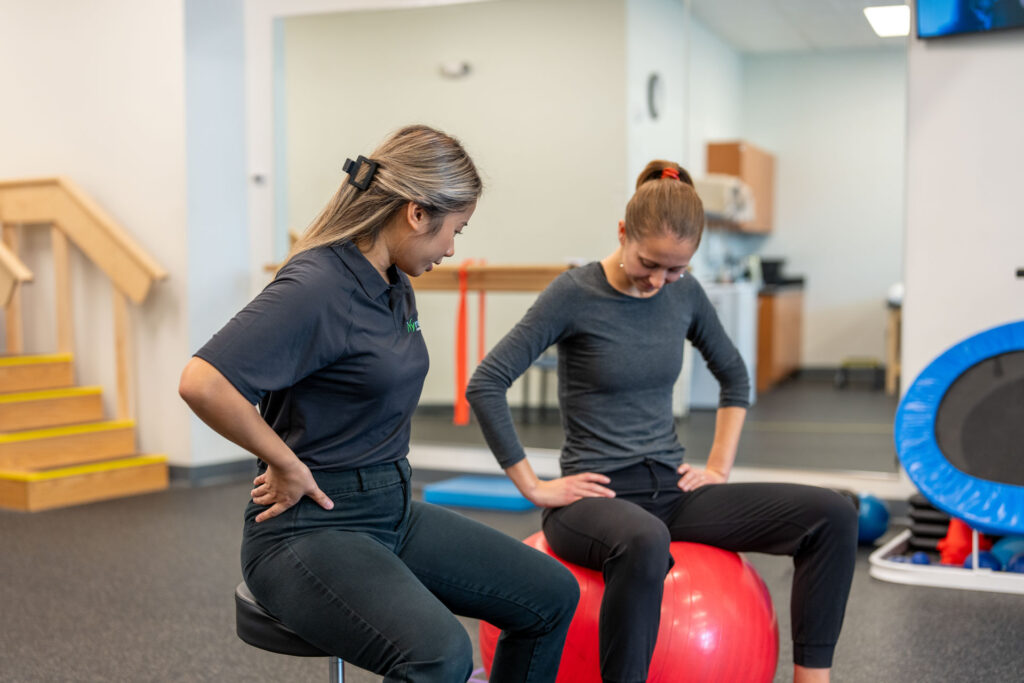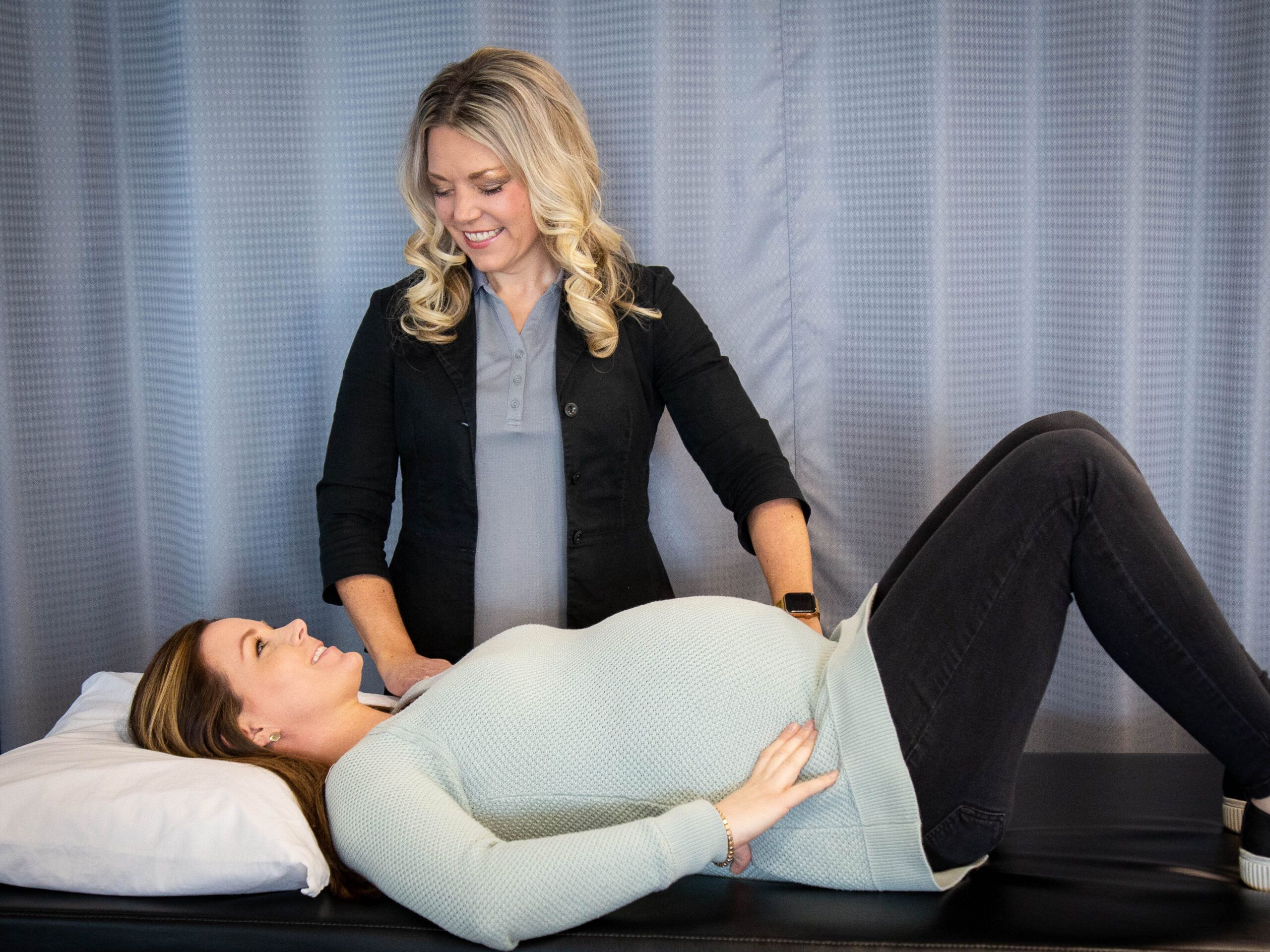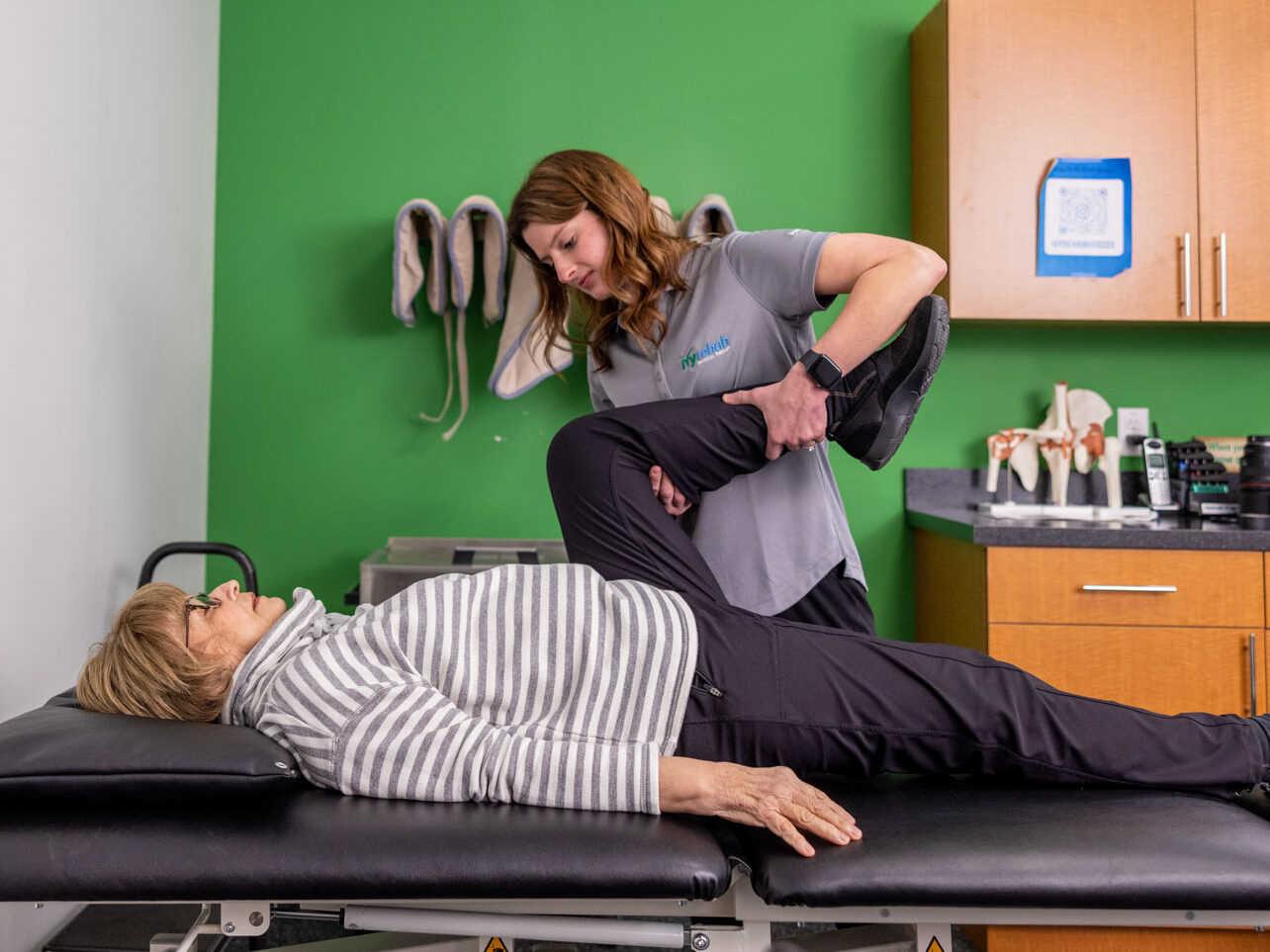
Bladder Health & Incontinence Therapy
At Ivy Rehab, our approach to bladder health and urinary incontinence therapy begins with a comprehensive evaluation to understand your unique symptoms and underlying causes. Based on these results, we develop a personalized treatment plan tailored to strengthen your pelvic floor muscles and improve their function.
What is the pelvic floor?
The pelvic floor is a series of muscles that support your bladder, uterus, bowels, as well as your bony structures such as your spine. Issues in this area can result in leakage, ‘having to go’ all the time, constipation, painful intercourse, and pain in the low back, hips, and tailbone. While these symptoms are common, they shouldn’t be labeled as normal. These issues are often long-lasting, and people feel awkward talking to their physician or health care provider but waiting will only make the issues worse. Unfortunately, when not treated by a proper pelvic health specialist, these issues are often misdiagnosed, or the symptoms are treated but the cause is missed. Our team of specialists uses education, electrical stimulation, home units, pelvic floor physical therapy methods, and biofeedback as needed to improve incontinence issues for both men and women.


What is incontinence?
Urinary incontinence is the leakage of urine at inappropriate times. With incontinence, you may have trouble starting the urine stream or holding urine when you feel a strong urge to go. This condition involves the muscles of the pelvic floor, which attach to the bottom of the pelvic bones and run front to back, forming a bowl-like structure that lifts to support the internal organs and controls the sphincter muscles. The pelvic-floor muscles also help support the low back, stabilize the pelvic bones, and help with sexual function. Women are more likely than men to have urinary incontinence, but men can have it, too.
Types of incontinence
- Stress incontinence – small amounts of urine leak when there is increased pressure on the bladder
- Urge incontinence – your bladder muscle goes into spasm, and, if the spasm is severe enough, medium to large amounts of urine may leak; this might happen only occasionally or as often as every 15 to 20 minutes
- Mixed incontinence – you have both stress and urge incontinence
- Functional incontinence – urine leaks when you can’t get to the bathroom in time
- Overactive bladder – You can also have an “overactive bladder” where your bladder empties frequently throughout the day (more than every 3 or 4 hours during the day) or makes you get up more than once to urinate at night. There is a variety of causes, such as sensitivities to certain foods or beverages.

How can a physical therapist help with urinary incontinence?
Based on our evaluation results, we will individualize treatments to strengthen your pelvic floor muscles and improve their function. We can help you:
- Regain confidence and control over your symptoms
- Reduce the need for pads and special undergarments, incontinence medications, and possibly surgery
- Strengthen your muscles and make them work better for you
- Urge Incontinence
Your physical therapist will:
- Show you how to “find” the right muscles and use them correctly.
- Guide you through pelvic floor muscle training exercises, such as Kegels, where you gently squeeze the sphincter muscles along with the buttocks, thighs, and abdominal muscles.
- Instruct you in exercises to stretch and strengthen other important muscles, so that they can support proper bladder function and pelvic stability.
- Use biofeedback techniques to monitor muscle activity and improve your awareness and control. This may involve vaginal or rectal electrodes displaying muscle activity on a monitor
- Apply electrical stimulation when appropriate to increase muscle awareness and strength
Behavioral and Lifestyle Education
We provide guidance on behavioral changes and lifestyle factors that can improve symptoms, including:
- Dietary and fluid management (avoiding bladder irritants like caffeine and alcohol)
- Bladder training and timed voiding strategies
- Posture and breathing techniques that support pelvic floor function
- Strategies to prevent constipation and reduce pressure on the bladder
Remember: knowledge is power
We can provide information regarding your diet and nutrition, including food and drinks that may irritate the bladder, changing behaviors that make symptoms worse, and ways to decrease urinary urge and frequency. We have a number of pelvic floor physical therapists who are trained extensively in techniques to treat pelvic floor dysfunction.
Request an appointment to find out how we can begin helping you today.

Find the right therapy today.
Discover how Ivy Rehab can help you achieve your therapy goals.
FAQs
Can physical therapy help urinary incontinence?
Yes. Pelvic floor physical therapy is a proven, non-invasive treatment for many types of incontinence. A physical therapist can design a personalized plan using Kegels, biofeedback, and bladder training to improve control and reduce leakage—often without surgery or medication.
Can urinary incontinence be cured?
In many cases, yes—especially when treated early. Physical therapy can significantly reduce or eliminate symptoms by strengthening pelvic floor muscles and improving bladder control. Some conditions may require medical or surgical care, but therapy combined with lifestyle changes often provides lasting relief and reduces reliance on pads or medication.
What is the best exercise for bladder control?
Kegel exercises are the most effective for improving bladder control. They strengthen the pelvic floor muscles that support the bladder and help prevent leakage during activities like coughing or lifting. A physical therapist can guide you to ensure proper technique and progress.

